Richmond, Struggletown & Modern Architecture
Friday, 16 February 2018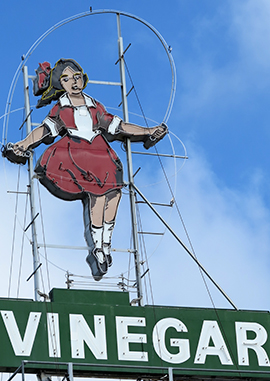 A large chunk of my life in Melbourne, Australia was spent in Richmond. Maureen and I lived in a rented house in Richmond from 1976, then bought it for A$20,500 in 1980, renovated it and lived in it until 1988 when we sold it for $144,000. At that time it was the highest price a house had got to on that street. The same house sold last year for A$1.7 million! We moved on to build another Richmond house from scratch with the architects Robinson Chen. It was cutting edge Richmond architecture at the time and it’s still known as the ‘Wheeler House.’ We sold that in 2001 and departed Richmond.
A large chunk of my life in Melbourne, Australia was spent in Richmond. Maureen and I lived in a rented house in Richmond from 1976, then bought it for A$20,500 in 1980, renovated it and lived in it until 1988 when we sold it for $144,000. At that time it was the highest price a house had got to on that street. The same house sold last year for A$1.7 million! We moved on to build another Richmond house from scratch with the architects Robinson Chen. It was cutting edge Richmond architecture at the time and it’s still known as the ‘Wheeler House.’ We sold that in 2001 and departed Richmond.
◄ The Skipping Girl Vinegar neon sign on Victoria St near the Yarra River, the brand has long gone, the neon sign lives on as one of the key symbols of Richmond
Richmond was one of the earliest Melbourne suburbs with grand houses on ‘Richmond Hill’ and the working class spilling down onto the surrounding flatlands towards the ever-flooding Yarra River. You can still find those grand houses although their expansive surrounding land soon disappeared and Richmond became a strictly working-class suburb – the elite had fled – by the time the Victorian economic collapse of the 1890s and then the depression of the 1930s gave Richmond the tag of Struggletown, it’s an award-winning 1984 book by Janet McCalman telling the Richmond story from 1905 to 1965.
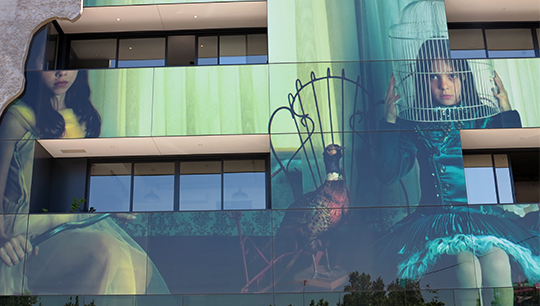
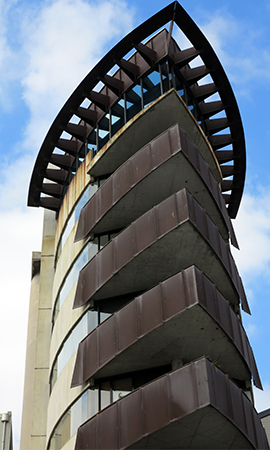 ▲ The Two Girls Building on Lithgow St just off Victoria St is actually in Abbotsford, just outside the Richmond boundaries. That’s the architect’s two daughters immortalised on the apartment facade.
▲ The Two Girls Building on Lithgow St just off Victoria St is actually in Abbotsford, just outside the Richmond boundaries. That’s the architect’s two daughters immortalised on the apartment facade.
◄ Nonda Katsalidis is a big name in Melbourne architecture, his Abinger St Silos were one of the first silos-to-apartment conversions and an early use of rusty metal
Richmond had gone through spells as a down-and-dirty industrial slum, a centre for petty crime and cut-throat Labor Party local politics before post WW II Greek immigrants turned it into the retsina and lamb kebab centre of Melbourne.
Swathes of the tightly-packed Victorian terrace houses disappeared to become high rise public housing and the warehousing and industrial activities transitioned as Richmond became the centre for the Melbourne rag trade. More changes swept through in the last quarter of the last century as Vietnamese boat people flooded in to the public housing and turned Victoria St into Little Saigon. It also became Melbourne centre’s for dealing in heroin and other drugs and for drug overdoses.
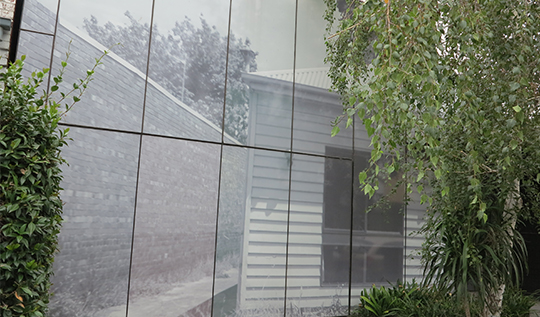 ▲ Known as Old House, this new house on Tyson St features a picture of the old house that used to stand there
▲ Known as Old House, this new house on Tyson St features a picture of the old house that used to stand there
I didn’t realise it when we bought our Victorian, weatherboard terrace, but we were part of the gentrification of Richmond as young people turned houses that were once slums into little architectural gems with price tags to match. The rag trade disappeared to China and other Asian centres, but the emptied-out factories and warehouses became apartments and also architectural showpieces with prices to match. An indication of this change from shanty town to luxury living also saw Richmond become the centre for Melbourne’s flash car dealers – Ferrari, Maserati, McLaren, Lamborghini, Aston Martin and Rolls-Royce all live in Richmond, along with Dutton’s, Melbourne rare-flash-collector’s-items-very fast used car specialist.
 ▲ Telsla are also in Richmond
▲ Telsla are also in Richmond
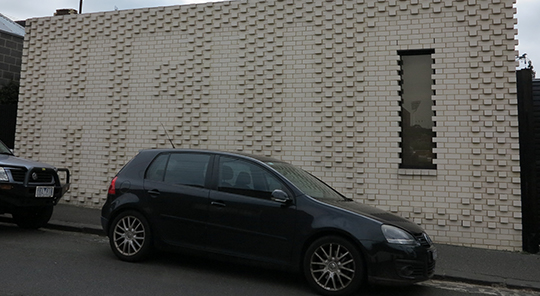 ▲ On Alfred St, just off Rowena Parade and right across from the Wheeler House is the Hello House, it’s surprising how ‘hello’ shows up very well on photos when just walking by you don’t even notice it
▲ On Alfred St, just off Rowena Parade and right across from the Wheeler House is the Hello House, it’s surprising how ‘hello’ shows up very well on photos when just walking by you don’t even notice it






